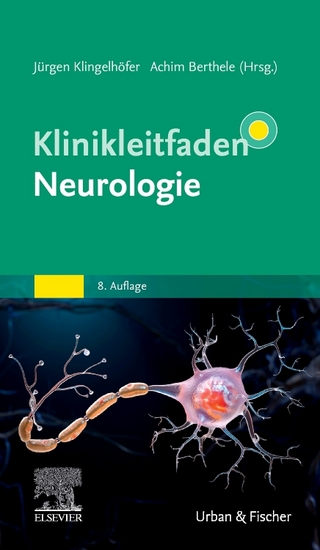
The Sonar of Dolphins
Springer-Verlag New York Inc.
978-1-4612-8745-2 (ISBN)
This is the first book to present a comprehensive and organized treatise on dolphin biosonar. Such an effort is long overdue, since there is a paucity of books on this subject. The book introduces concepts ranging from physics to the creation of mathematical models as an aid to the quantification and understanding of biosonar capabilities. Topics further range from auditory pathways and processes, to the anatomy of the dolphin's head, to signal processing models, to a comparison of the sonar of bats and dolphins.
1 Introduction.- 1.1 Historical Perspective.- 1.2 Some Underwater Acoustics.- 1.3 The Time and Frequency Domains.- 1.4 Experimental Psychological Methodology.- 1.5 Signal Detection Theory.- 2 The Receiving System.- 2.1 The Outer Ears.- 2.2 The Middle Ear.- 2.3 The Inner Ear.- 2.4 Summary.- 3 Characteristics of the Receiving System for Simple Signals.- 3.1 Hearing Sensitivity.- 3.2 Spectral Analysis Sensitivity.- 3.3 Directional Hearing.- 3.4 Response Bias and Sensitivity in Hearing.- 3.5 Summary.- Appendix: Derivation of the Receiving Directivity Index.- 4 Characteristics of the Receiving System for Complex Signals.- 4.1 Perception of Click Signals.- 4.2 Perception of Time Separation Pitch.- 4.3 Summary.- 5 The Sonar Signal Transmission System.- 5.1 Preliminary Examination of Biosonar Signals.- 5.2 Sound Production Mechanism.- 5.3 Acoustic Propagation in the Dolphin’s Head.- 5.4 Summary.- 6 Characteristics of the Transmission System.- 6.1 The Concept of Near and Far Acoustic Fields.- 6.2 The Dolphin Near- to Far-Field Transition Region.- 6.3 The Acoustic Field on a Dolphin’s Head.- 6.4 Directional Pattern of Biosonar Signals.- 6.5 Equivalent Planar Circular Aperture.- 6.6 Summary.- 7 Characteristics of Dolphin Sonar Signals.- 7.1 Click Intervals.- 7.2 Frequency Characteristics.- 7.3 Click Source Levels.- 7.4 Number of Clicks and Response Latencies.- 7.5 Signals from Other Species.- 7.6 Summary.- 8 Target Detection Capability of the Active Sonar System.- 8.1 The Physics of Acoustic Reflection by Targets.- 8.2 Noise-Limited Form of the Sonar Equation.- 8.3 Biosonar Detection Capabilities.- 8.4 Detection of Complex Echoes.- 8.5 Comparison Between a Dolphin and an Ideal Receiver.- 8.6 Target Detection in Reverberation.- 8.7 Summary.- 9 Biosonar Discrimination, Recognition, and Classification.- 9.1 Mathematical Tools for the Analysis of Target Echoes.- 9.2 Target Size Discrimination.- 9.3 Target Structure Discrimination.- 9.4 Target Shape Discrimination.- 9.5 Delayed Matching to Sample.- 9.6 Target Range Difference Discrimination.- 9.7 Insights from Human Listening Experiments.- 9.8 Summary.- 10 Signal Processing and Signal Processing Models.- 10.1 Analysis of Dolphin Sonar Signals.- 10.2 The Dolphin Modeled as an Energy Detector.- 10.3 Signal Processing Models for Target Recognition.- 10.4 Artificial Neural Networks and Target Recognition.- 10.5 Summary.- 11 Comparison Between the Sonar of Bats and Dolphins.- 11.1 Comparison of Sonar Signals.- 11.2 Comparison of Signal Detection Capabilities.- 11.3 Comparison of Target Discrimination Capabilities.- 11.4 Doppler Compensation and Flutter Detection.- 11.5 Summary.- 12 Road Map for Future Research.- 12.1 Mechanisms of Sound Reception and Hearing.- 12.2 Mechanisms of Sound Production and Transmission.- 12.3 Biosonar Capabilities and Mechanisms.- 12.4 Signal Processing Models.- 12.5 Natural and Dynamic Biosonar Behavior.- 12.6 Concluding Remarks.
| Zusatzinfo | XII, 278 p. |
|---|---|
| Verlagsort | New York, NY |
| Sprache | englisch |
| Maße | 178 x 254 mm |
| Themenwelt | Medizin / Pharmazie ► Medizinische Fachgebiete ► Neurologie |
| Medizin / Pharmazie ► Studium | |
| Naturwissenschaften ► Biologie ► Humanbiologie | |
| Naturwissenschaften ► Biologie ► Zoologie | |
| Naturwissenschaften ► Physik / Astronomie ► Mechanik | |
| Technik | |
| ISBN-10 | 1-4612-8745-6 / 1461287456 |
| ISBN-13 | 978-1-4612-8745-2 / 9781461287452 |
| Zustand | Neuware |
| Haben Sie eine Frage zum Produkt? |
aus dem Bereich


